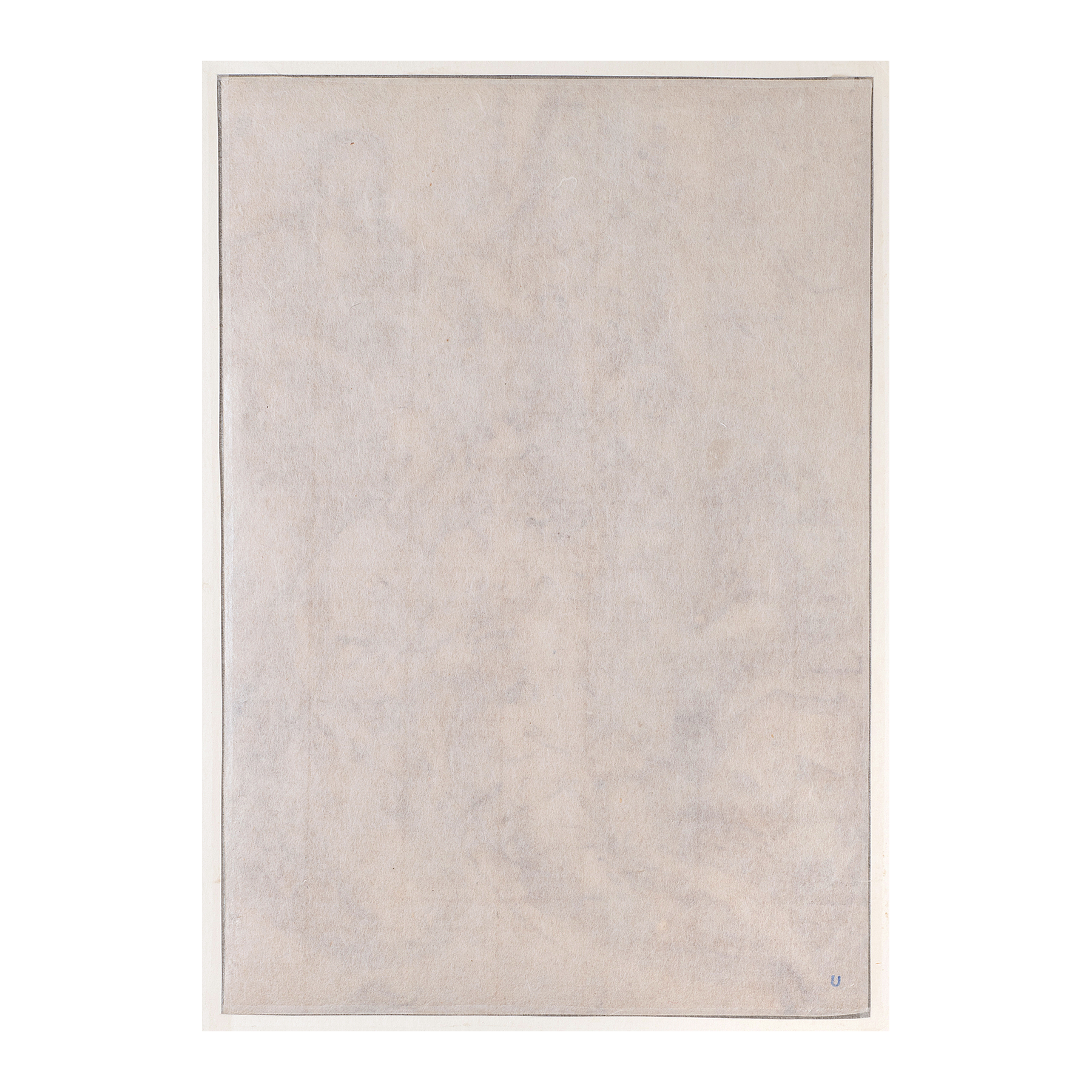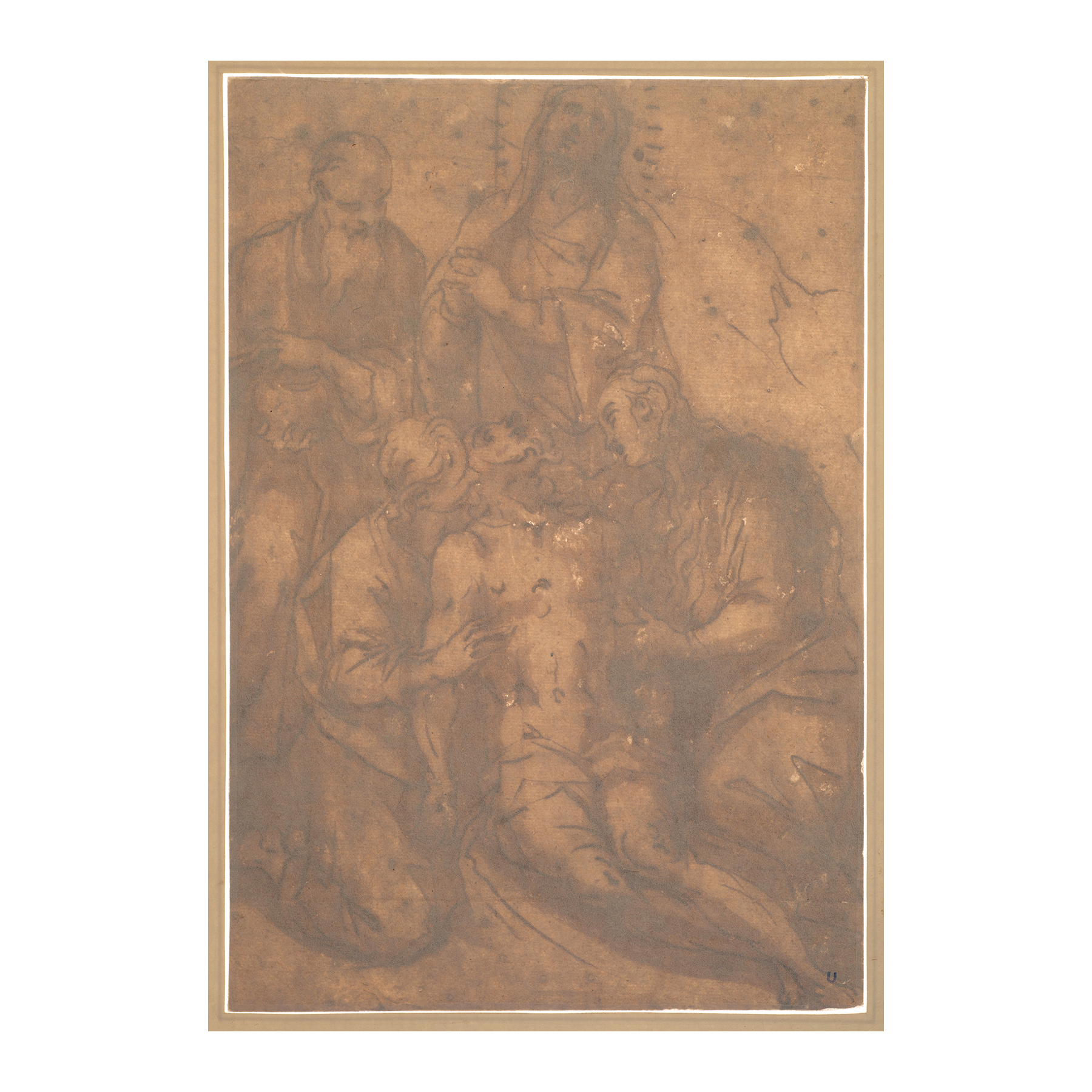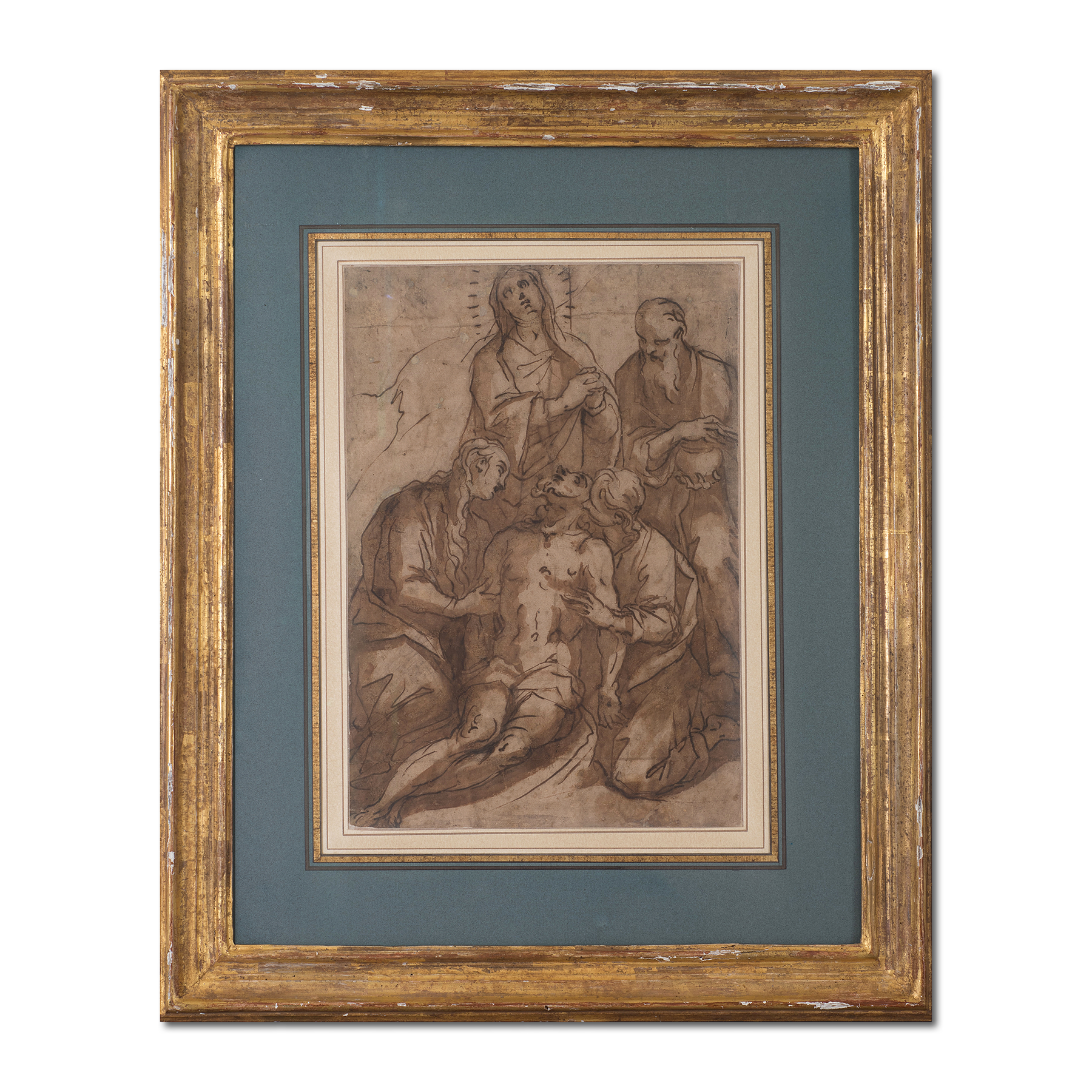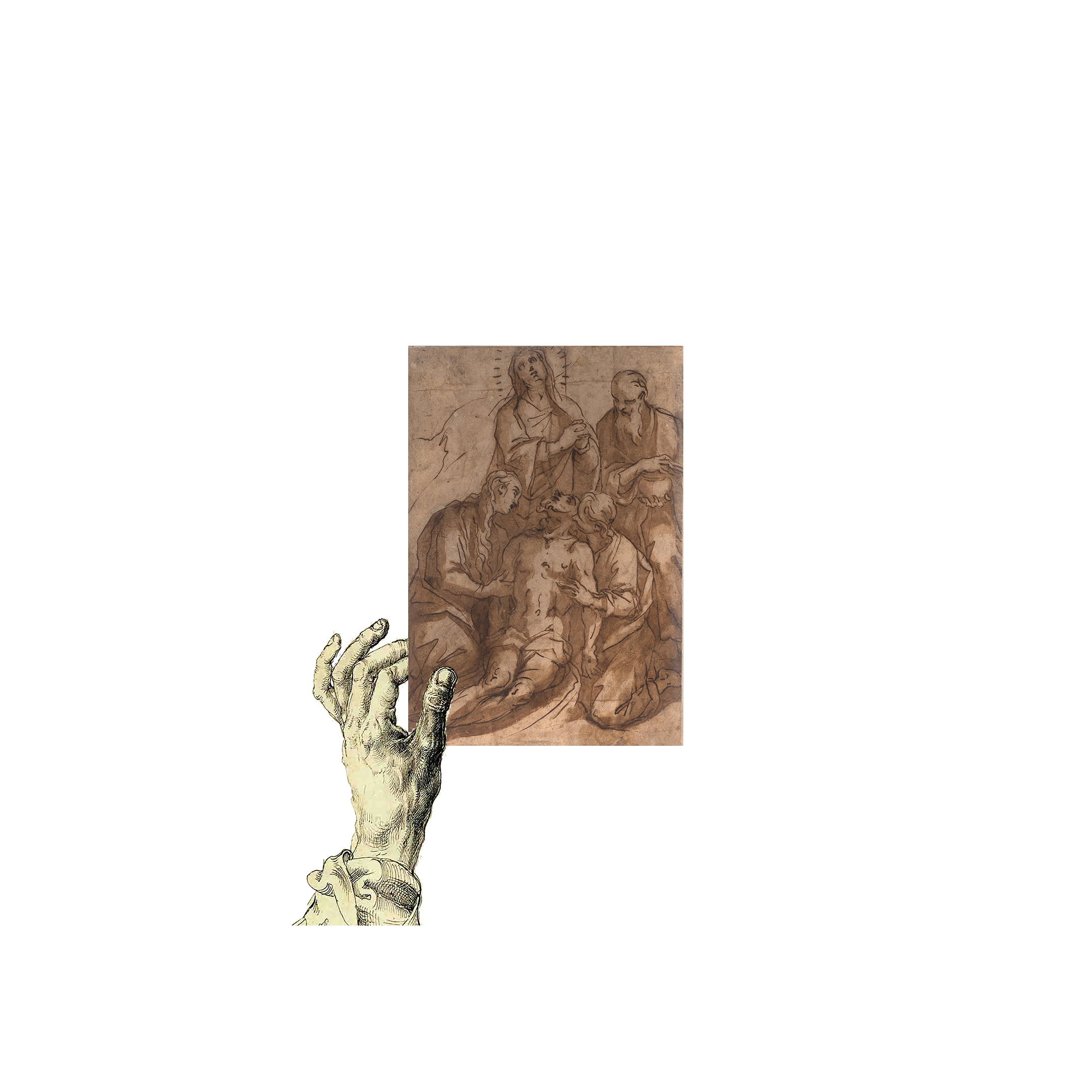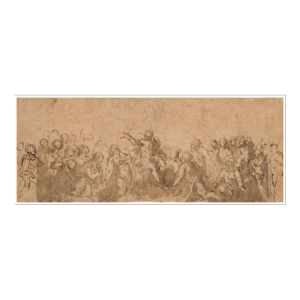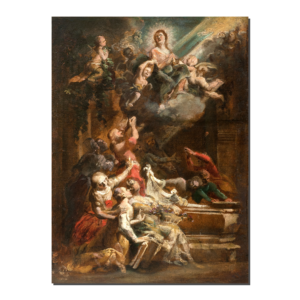Alessandro MAGANZA
Vicenza, 1556 – 1630
The Lamentation of Christ
Pen and brown ink, brown wash over black pen lines.
280 x 190 mm – 11 1/32 x 7 1/2 in.
Large rounded watermark.
Provenance: Saint-Ouen, Arsinopia gallery, 2008 ; ; Paris, Jacques-André and Colette Ulmann collection, their stamp (L. 3533) on the back, lower right; Paris, Beaussant-Lefevre sale, Ulmann collection, February 10, 2022, n° 55.
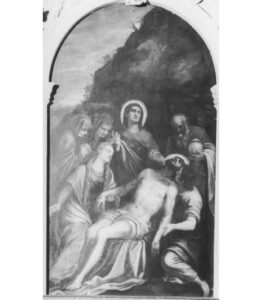
Born in Vicenza in 1556, Alessandro Maganza trained in the studio of his father, Giovanni Battista, then took lessons from the Veronese Giovanni Antonio Fasolo. Between 1572 and 1576, he stayed in Venice, studying the works of Veronese and Zelotti. This trip is decisive in his way of drawing because his style is transformed, under the influence of the Venetian mannerist painters, and more especially of Palma il Giovane. He then opened a workshop in his hometown which became very productive thanks to the collaboration of his three sons, Giambattista il Giovane, Marcantonio and Gerolamo. He produced numerous altarpieces for the decoration of churches and abbeys in Vicenza: The Virgin with four evangelists at Monte Berico, The Adoration of the Magi at San Domenico, The Martyrdom of Saint Justina, at San Pietro and Ciel. and hell in San Rocco. He also received commissions from other Italian cities: Padua, Bergamo, Brescia, Milan and Pavia.

This drawing illustrates the last episode of the Passion of Christ entitled The Lamentation of Christ representing the Virgin, Mary Magdalene, Saint John and Joseph of Arimathea supporting the body of Christ after his descent from the Cross. Alessandro Maganza has dealt with this subject several times in his career. In particular, he made a pala (fig. 1) for the first altar in the right nave in the church of S. Pietro Intrigogna in Vicenza, of which we propose that our sheet be one of the preparatory drawings. We can also compare it to two drawings of the same subject, offered on the art market in 1997, presenting similarities in the style and attitude of the characters. In the first[1] (fig. 2), the inclination of the bust and the head of Christ leaning backwards is identical in our sheet as well as the figure of Joseph of Arimathea, in the background at right, holding the vase of ointment. In the second[2], we find the Virgin depicted standing, behind the body of her reclining son, with her hands crossed as a sign of adoration.
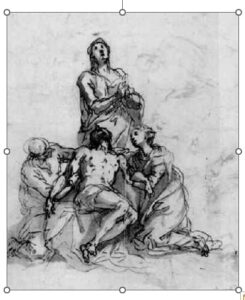
Influenced by the Mannerist art of Tintoretto and Palma il Giovane, Alessandro Maganza outlines his characters with a rapid stroke and applies touches of wash to underline the dramatic tension of the scene. The long slender fingers and small pointed noses are characteristic of the manner of the Vincentian artist.
Condition report – Lined drawing. Folds and stains. Fragile paper (small holes) lined and mounted openwork. Framed.
[1] The Lamentation of Christ; pen, brown ink, and wash over lines of black chalk; 276 x 197mm; London, Sotheby’s sale, July 2, 1997, n° 136.
[2] The Lamentation of Christ; pen, brown ink, and wash over lines of black chalk; 170x140cm; London, Sotheby’s sale, April 17, 1997, No. 143.


